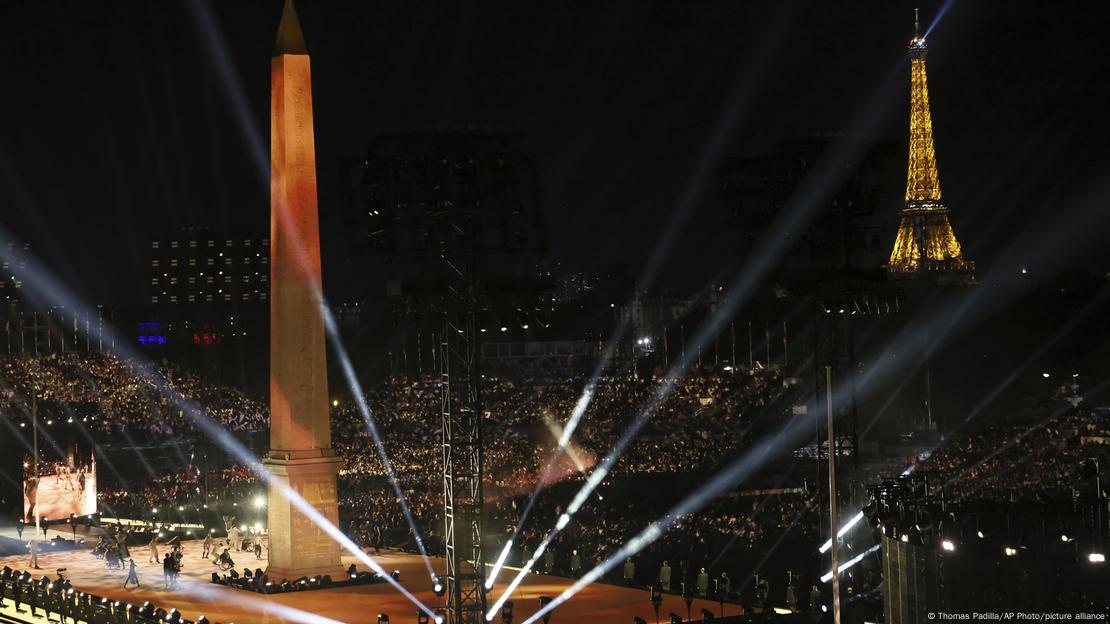|
|
General: LUXOR OBELISK CENTRE OF THE PLACE DE LA CONCORDE PARIS LOUVRE MADELEINE CHURCH
Elegir otro panel de mensajes |
|
|
Luxor Obelisks
From Wikipedia, the free encyclopedia
The Obelisk of Luxor at the centre of the Place de la Concorde, Paris
The remaining obelisk at Luxor Temple pylon
Both obelisks in their original position before the pylon of Luxor Temple, 1832
The Luxor Obelisks (French: Obélisques de Louxor) are a pair of ancient Egyptian obelisks, over 3,000 years old, carved to stand either side of the portal of the Luxor Temple in the reign of Ramesses II (c. 1250 BC). The right-hand (western) stone, 23 metres (75 ft) high, was moved in the 1830s to the Place de la Concorde in Paris, France, while the left-hand (eastern) obelisk remains in its location in Egypt.
The Luxor Obelisk in Paris was classified officially as a monument historique in 1936.
The Luxor Temple predated Ramesses II by about 150 years. During his reign, renovations were made that included the addition of the two obelisks.
The obelisks were each carved from a single piece of red granite, quarried about 100 miles (160 km) south of Luxor in Aswan, transported on a specially designed barge, and lowered into place with ropes and sand.[1]
The two obelisks were slightly different heights, and the one remaining in Luxor is taller. The shorter obelisk was mounted on a taller pedestal and placed farther from the pylon than the other. To an advancing spectator the obelisks may have appeared to be the same height, and this design choice may have been highly deliberate.[2][3]
The obelisk remaining in Luxor is leaning.[4] The Paris obelisk has a fissure in the original stone that had been tended to in antiquity.[5]
The eastern and western faces of each obelisk were slightly convex, the only two ancient obelisks with the feature, and the reason for this is not understood.[2]
Both obelisks feature hieroglyphic text carved in sunken relief on all four sides. In the 19th century, François Chabas produced a full translation of the western (Paris) obelisk, which is about Ramesses II, Amun-Ra, and Horus, and can be read here.
Luxor Obelisk in Paris
[edit]
 Removal of the obelisk
The idea to transport the Luxor Obelisks to Paris appeared first during Napoleon's campaign in Egypt. On 21 March 1799 General Louis-Charles-Antoine Desaix wrote a letter to Napoleon informing him of the existence of two obelisks in Thebes which would constitute an extraordinary sight once brought to Paris.[6] Similarly, Vivant Denon recalls in his 1802 Voyage dans la basse et la Haute Égypte the possibility to bring the obelisks to Paris as a trophy of French conquest.[7] Finally, on 8 October 1800, Jean-Marie-Joseph Coutelle presented before the Institut d'Égypte in Cairo the first technical considerations on the transport and erection of one of the obelisks to the Place de la Concorde.[8] With the eventual end of the French Campaign in Egypt, these plans, however, were never realized.
Under Napoleon's successor, Louis XVIII, the French acquired rights to Cleopatra's Needle in Alexandria, though this obelisk was never moved to France and ended up in New York City in 1881.
In the 1820s Charles X opened an Egyptian Museum and sought an obelisk as a piece of Egyptian art. Around this time, Jean-François Champollion, who had recently achieved prominence for his decipherment of the Rosetta hieroglyphs, saw the Luxor obelisks for the first time and urged the French government to acquire them over any other obelisks.[9]
 Cairo Citadel Clock Cairo Citadel Clock, reportedly given by the French in the 1840s, outside the Mosque of Muhammad Ali
In November 1830, Muhammad Ali Pasha, ruler of Ottoman Egypt, officially gave the Luxor obelisks to France. In so doing he reversed a previous gift of the two obelisks to the British: on a suggestion by France's Consul-General Mimault, himself inspired by Champollion, he instead gave the UK the obelisk of Hatshepsut in Karnak Temple, which was in fact impractical to extract from the surrounding stone structures as Champollion knew well; the British nevertheless accepted.[10] Also, French diplomat Baron Isidore Justin Séverin Taylor, Mimault's senior, finalized the terms of the gift despite having been mandated to do so by Charles X, who had been overthrown in the meantime by the July Revolution.[11]
In reciprocation for the gift, France gave the Ottomans a mechanical clock in the 1840s, today known as the Cairo Citadel Clock.[4] The clock has rarely worked since its arrival in Cairo, but in 2021 the Supreme Council of Antiquities announced that "Egypt is seeking to repair the citadel clock, one of the oldest of its type in the world, so that it will work again."[12][13]
In 1981, President François Mitterrand of France definitively renounced possession of the second obelisk, thus restoring its property to Egypt.[14][15]
Transport and re-erection
[edit]
 Sphinx Sphinx towing the barge Louqsor ferrying the Luxor Obelisk to France
It was decided that the western (shorter) obelisk would be moved first, and in 1831, it was taken down. It was transported by a ship custom-built for the transport, the Luxor. It arrived in Paris in 1833 and was erected in 1836 at the centre of Place de la Concorde by King Louis-Phillipe. Champollion could not see the completion of his project, since he died in 1832 as the obelisk was still between Luxor and Alexandria.[10]
The total cost of relocating the obelisk was estimated at 2.5 million francs (equivalent to an estimated €16 million or $19 million in 2020).[16][17] The high cost may be why the second obelisk was never moved.
The choice of the Concorde was politically expedient, because that spot was iconic and emotionally charged — not least for having been the main location of the guillotine during the French Revolution — and it was difficult to find a way to fill it in a way that would convey sufficient prestige but not inflame political passions. The obelisk matched these criteria perfectly, given its antiquity and lack of connection with French history. It won over alternative options including the Cour Carrée of the Louvre, which had been recommended by such luminaries as Edme-François Jomard and Vivant Denon, but would have been technically more difficult.[10]
 Detail of the modern pedestal in Paris
The present-day pedestal was originally intended for an equestrian statue by Jean-Pierre Cortot of Louis XVI, but the statue was destroyed during the July Revolution in 1830.[citation needed] In 1839, diagrams explaining the complex machinery that was used for the transportation were added to the pedestal.[18]
The original Egyptian pedestals involved sculptures of baboons with prominent male genitalia, raising their hands to the sun. A fragment of this original pedestal from the rear of the remaining obelisk was brought to Paris at the same time as the obelisk, intended to be displayed with it. Deemed too obscene for public exhibition, it was sent to the Egyptian section of the Louvre.[19]
France added a gold-leafed pyramid cap to the top of the obelisk in 1998,[20] with the costs covered by sponsorship from Yves Saint Laurent.[10] It had long been suspected that the bare pyramidion had originally been covered with a bronze, gold, or electrum cap,[21] speculated to have been stolen in the 500s BC.[citation needed]
With the pedestal and cap, the height of the monument is approximately 33.37m (109ft).[22]
Following her visit to Paris in 1840 Lydia Huntley Sigourney wrote her poem Obelisk of Luxor, in the Place de la Concorde, which she published in her Pleasant Memories of Pleasant Lands in 1842. [23]
- On 1 December 1993, demonstrators from Act Up Paris [fr], an organization dedicated to fighting AIDS, covered the Parisian obelisk with a giant pink condom to mark World AIDS Day.[24][25]
- In 1998 Alain "Spiderman" Robert, the French urban climber, illegally scaled the Parisian obelisk without the use of any ropes or other climbing equipment or safety devices.[26]
- In 1998, the monument was covered by a replica trophy as part of the 1998 World Cup[27]
- In 1999 as part of Paris's millennium celebration activities, 300 brass disks and nearly 1,000 feet of yellow thermosensitive strips were placed around the obelisk in order to use it as the gnomon of a functioning sundial. They remained until the end of the year 2000.[22]
- In 2015 Milène Guermont's monumental interactive sculpture PHARES[28] was displayed next to the obelisk for several months, where it was designed to illuminate the obelisk.
- August 28, 2024 Place de la Concorde in Paris, France was the stage for the Paralympic Opening Ceremony with the western Luxor Obelisk center stage of the venue.
|
|
|
 Primer
Primer
 Anterior
2 a 11 de 11
Siguiente
Anterior
2 a 11 de 11
Siguiente
 Último
Último

|
|
|
-
On October 25, 1836, the Luxor Obelisk was erected in the center of the Place de la Concorde by order of King Louis-Philippe. Offered to France by the Viceroy of Egypt as a token of goodwill,
I too this picture today was i was passing through the area and the sun was so magnificent…
|
|
|
|
|
- "[T]his makes it rather clear that Janet Jackson, via exposing her right breast and her juxtaposition with Beyonce
 (representing the American spirit), was 'designed' to embody Lady Justice/Liberty - signifying or prompting the rebirth of the spirit of 'Columbia'. The prevalent 'blackness' additionally alludes to the pertinence of another related figure Mary Magdalene, recently made popular by the huge success of the book The Da Vinci Code, as this biblical/esoteric 'wife' of Jesus - embodying the feminine and sexuality - was sometimes portrayed as the 'Black Madonna'." (representing the American spirit), was 'designed' to embody Lady Justice/Liberty - signifying or prompting the rebirth of the spirit of 'Columbia'. The prevalent 'blackness' additionally alludes to the pertinence of another related figure Mary Magdalene, recently made popular by the huge success of the book The Da Vinci Code, as this biblical/esoteric 'wife' of Jesus - embodying the feminine and sexuality - was sometimes portrayed as the 'Black Madonna'."
https://www.goroadachi.com/etemenanki/lucifer-timecode-2.htm |
|
|
|
|
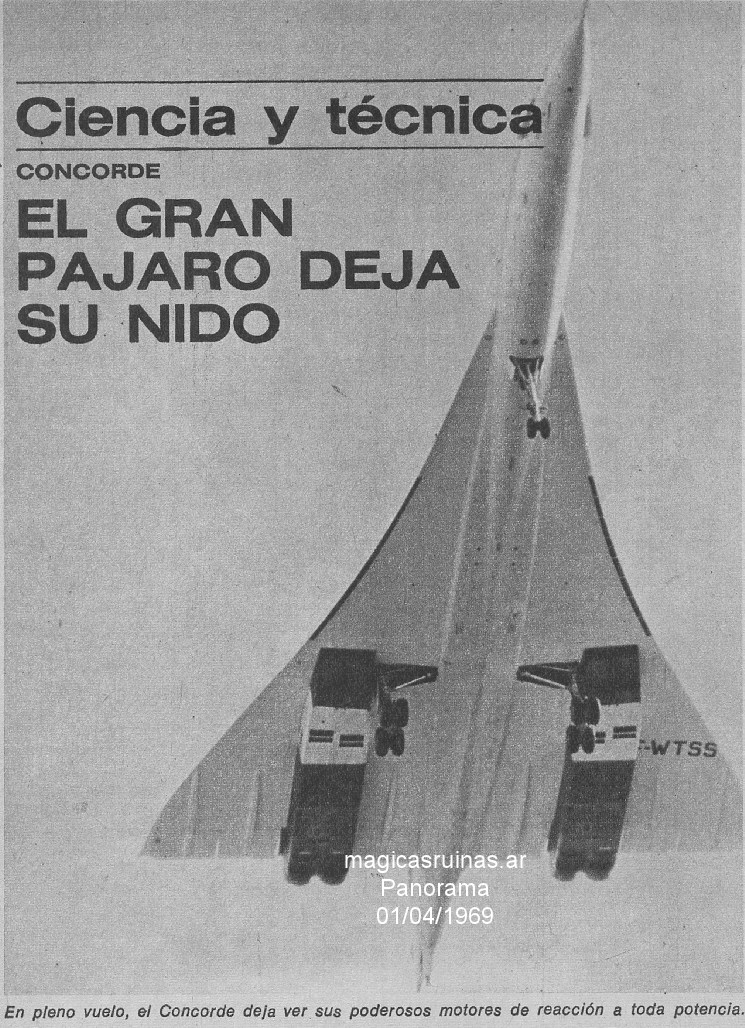 |
CONCORDE
EL GRAN PAJARO DEJA SU NIDO
Los altoparlantes desgranaron tres tristes notas: sonaron como el canto angustiado de un pájaro. En realidad era una estratagema de los técnicos para alejar del aeropuerto de Blagnac las bandadas de estorninos que habían invadido la región. Se trataba de evitar que los pequeños pájaros comprometieran el despegue del pájaro gigante. A las 15 horas y 36 minutos del último 2 de marzo se iniciaba así el Operativo Fox Whisky Sierra Sierra Tango, clave para deletrear, FWSST, nombre Oficial del Concorde para la seguridad aérea. La F por Francia, Whisky por prototipo y, finalmente, la sigla SST por vuelo supersónico.
A las 16 y 10, exactamente, todo había terminado. Hubo entre los espectadores una explosión de alegría: la suprema creación de la industria aeronáutica anglo-francesa —el Concorde— volaba, y volaba bien. La multimillonaria apuesta que se había hecho hacía siete años acababa de ser ganada en forma brillante para beneplácito de ingleses y franceses y, en general, de todos los europeos.
En los países más industrializados del mundo son muy frecuentes las pruebas de aviones prototípicos. Pero éste era un caso realmente especial, el final de una guerra dé imágenes: la de la industria europea ante la de los Estados Unidos. El éxito del Concorde —un gigantesco avión de pasajeros sin precedentes en la historia de la aviación— significaba nada menos que el derecho, por parte de los europeos, de seguir compitiendo con sus aliados yanquis en el plano de la más compleja de las industrias. El éxito representa para Francia ¡una justificación para seguir proclamando su "grandeur", al tiempo que desautoriza las tácticas y manifiestas protestas del "young power" que alegran las neblinosas calles de Londres.
Sin embargo, ese prototipo tiene diferencias con el Concorde definitivo. El 001 —como se lo llama— no pesaba más de 108 toneladas. En su vuelo inicial estaba provisto de ¡muy escasa reserva de carburante en razón de los pocos minutos que duraría y a que no llevaba ningún pasajero a bordo. El futuro Concorde —que será puesto en servicio comercial dentro de tres o cuatro años— deberá despegar con un peso considerablemente mayor: 178 toneladas. En cuanto a los motores que emplea el actual prototipo tampoco son los definitivos. Los probados son los Olympus 593 del estadio "O" y sus performances están limitadas a sólo 37.400 libras con uso de los posquemadores, un dispositivo que tiende a aprovechar los gases mal quemados. Los Olympus que se entregarán dos años después de la puesta en servicio del Concorde, con la entrega del cuadragésimo avión, tendrán una potencia de 38.240 libras, incluidos los correspondientes posquemadores.
En el momento de la puesta en servicio comercial, el Concorde será el avión de línea capaz de trasportar 140 pasajeros, además de los integrantes de la tripulación. A pesar de sus gigantescas proporciones desarrollará una velocidad máxima de crucero alucinante: 2,2 Mach, o sea 2.330 kilómetros por hora. No será fácil, sin embargo, verlo cruzar el cielo porque se ocultará a la vista desde la tierra: en los momentos de velocidad máxima viajará a la altura media entre los 15 mil y los 19 mil metros. Como tendrá una carga útil máxima de 12.700 kilos—lo que significará una autonomía de vuelo ligeramente superior á los 6.400 kilómetros— el nuevo avión acortará sorprendentemente la duración de los viajes. Por ejemplo, invertirá sólo 3 horas y veinte minutos en cruzar el océano Atlántico (en la actualidad los aviones subsónicos de reacción que hacen el servicio entre Europa y los Estados Unidos tardan para hacer el mismo recorrido siete horas y media).
Si resultan sorprendentes la altura y la velocidad de desplazamiento del Concorde no lo son menos sus dimensiones. Mide 58 metros de longitud (seis metros menos que la altura del obelisco de Buenos Aires). Tiene 11 metros y medio de alto (aproximadamente el de una casa de tres pisos) y más de 26 metros y medio de envergadura, o sea de distancia entre los extremos de las alas. El sistema hermético de la cabina está regulado electrónicamente y puede mantener una presión interior normal equivalente a la que se está expuesto a los 1.800 metros, aunque vuele a 18 mil de altura. Los mandos son accionados por medio de señales eléctricas. Los circuitos correspondientes están duplicados con dos subsistemas totalmente separados y, en el caso de producirse tuna falla general, el piloto puede acudir a un sistema mecánico de emergencia. El sistema hidráulico también consta de dos circuitos principales totalmente separados y de un sistema de emergencia independiente. Tanto el timón de dirección como el tren de aterrizaje, los frenos, el mecanismo de dirección del tren delantero, la nariz abatible (para dar mayor visibilidad al piloto en los momentos de despegue, aterrizaje y maniobras en pista), las entradas de aire y las bombas para el combustible, son de accionamiento hidráulico.
Gran parte de la estructura del Concorde ha sido construida de una recia aleación de aluminio, resistente al calor. En ciertas secciones, sin embargo, se empleó una aleación de acero y titanio, de mayor resistencia aún.
Orígenes del proyecto
En 1956, establecimientos de investigaciones industriales y estatales de ambos lados del canal de la Mancha, iniciaron los estudios preliminares sobre los problemas del vuelo comercial supersónico. El 19 de noviembre de 1962 se celebró una acuerdo entre los gobiernos de Francia y el Reino Unido en el cual se repartían por partes iguales la responsabilidad, los costos, las tareas de desarrollo y producción, y el producto de las ventas de un avión supersónico que habría de llamarse Concorde. Todo el trabajo, según establecía el convenio, sería fiscalizado por un comité permanente adjunto integrado por funcionarios especializados que son responsables ante ambos gobiernos signatarios.
Estos, a su vez, delegaron su responsabilidad en la British Aircraft Corporation (BAC) y la empresa francesa Sud Aviation (sociedad anónima de cuya propiedad forma parte el estado francés). Ambas empresas optaron por el empleo de un largo fuselaje delgado y con alas en forma de ojiva, con el objeto de reducir al máximo la resistencia supersónica.
De acuerdo con el convenio, la empresa británica se encargó del 66 por ciento de las tareas de desarrollo del 'motor y del 40 por ciento de las relativas a la estructura, y la empresa francesa, por su parte, del resto, que totaliza aproximadamente el 50 por ciento del proyecto total.
El programa de pruebas en tierra fue el más minucioso jamás aplicado hasta ahora a un avión de línea. En él participaron los más importantes laboratorios e instalaciones para el ensayo de aviones, tanto del Reino Unido como de Francia, a un costo equivalente a los 3.780 millones de pesos.
El programa de ensayos en aire comprende tres etapas. La primera de ella, a baja altura, está consagrada a la puesta a punto de los equipos. En el interior del actual Concorde hay 12 toneladas de cables e implementos electrónicos que registran tres mil datos y los envían directamente a tierra. De este modo los técnicos de los controles terrestres conocen el comportamiento del avión mejor que el afamado piloto de pruebas André Turcat, quien tuvo a su cargo el primer vuelo de prueba, y posteriormente otros tres más.
La segunda etapa de ensayos se iniciará probablemente dentro de poco más de un año. En ella se estudiarán las vibraciones producidas por las corrientes violentas de gran altura. Estas pruebas se realizarán con el prototipo construido en Inglaterra.
La tercera etapa estudiará el comportamiento del avión en la zona próxima a la velocidad del sonido (Mach 0,93 y Mach 1,2). En total, las tres etapas de vuelo de prueba llevarán 4.500 horas.
Todavía se está investigando el problema del ruido, producido tanto por el estampido sónico como por los motores. En 1967 se realizaron en el Reino Unido una serie de ensayos destinados a determinar la reacción del público al estampido sónico, pero hasta que el propio avión no haya volado a velocidades supersónicas no se sabrá con precisión qué pasará cuando se produzca el estampido. Investigaciones recientes permiten suponer que sería posible atenuar sus efectos, pero incluso si se prohibieran los vuelos supersónicos sobre territorio habitado, seguiría habiendo un gran mercado para el Concorde puesto que el 75 por ciento del tránsito aéreo mundial se limita a rutas oceánicas.
Se estima que en la segunda mitad de 1970 las compañías que han comprometido hasta ahora sus compras de Concorde —74 aviones para 10 países: Estados Unidos, Reino Unido, Francia, Australia, Canadá, Japón, Alemania, Bélgica, Líbano y la India— podrán disponer de sus aparatos. Las importantes empresas que han reservado opciones de compra no abrigan dudas acerca del aumento de tránsito que provocará la rapidez del Concorde. Se esperan vender para 1975 unos 200 aparatos y se estima que la demanda mundial potencial es de unos 500 aviones supersónicos, lo que representaría ventas —compartidas con los Estados Unidos— por un valor total de 7.000 millones de libras esterlinas.
Tales perspectivas justifican el entusiasmo de sus constructores ante el éxito del primer vuelo experimental. Al día siguiente de la prueba, los ingleses — tradicionalmente parcos en exteriorizaciones— emitieron mediante el Ministerio de Correos de Gran Bretaña estampillas especiales para conmemorar el vuelo inicial del maravilloso pájaro gigante.
PANORAMA, ABRIL 19, 1969 |
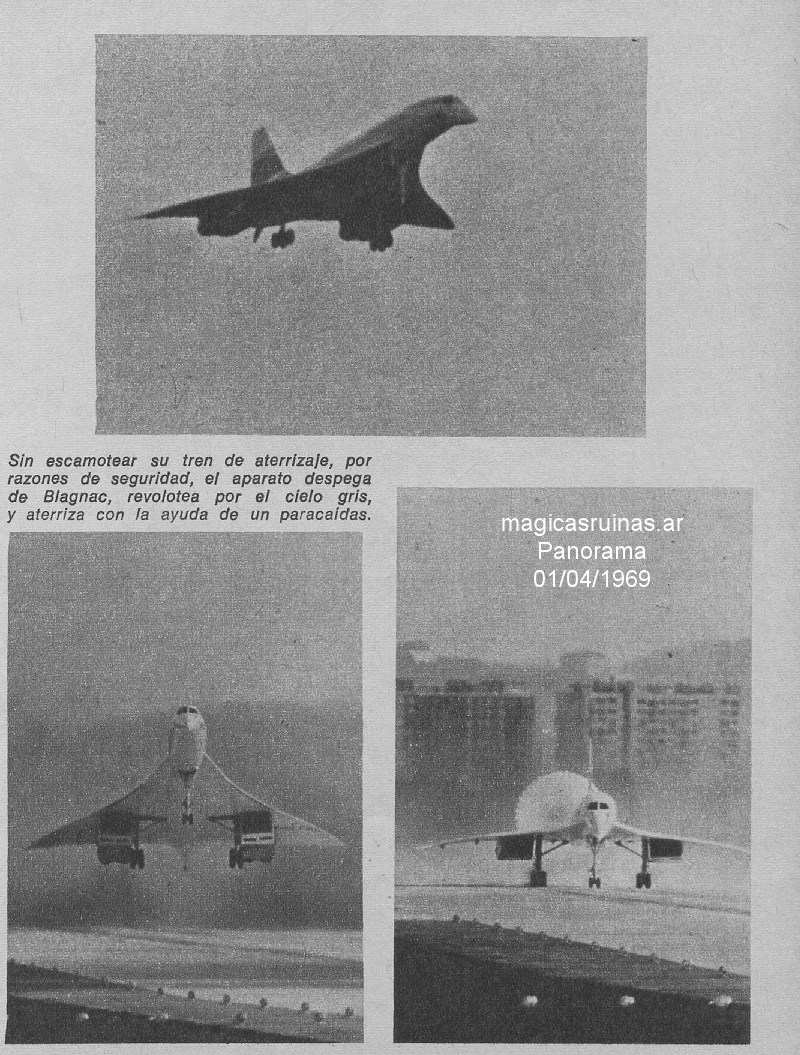 |
https://www.magicasruinas.com.ar/revistero/4/concorde.html |
|
|
|
|
LAST UPDATED: 27 NOVEMBER 2024
You may know Paris for its cathedral Notre-Dame, the Eiffel Tower, its café culture and its amazing museums and art galleries. The French capital is also famous for its fantastic perspective that runs from the Louvre to La Défense. This is the ‘Voie Triomphale’, aka the Historical Axis of Paris.
This line is one of the most prestigious perspectives in the world. In fact, its design has inspired cities such as Buenos Aires, Washington DC, New Delhi and Canberra. In this article, we’ll learn more about the Historical Axis of Paris. We’ll discover the stunning monuments and I reveal to you some stunning facts.
What is the Historical Axis of Paris?
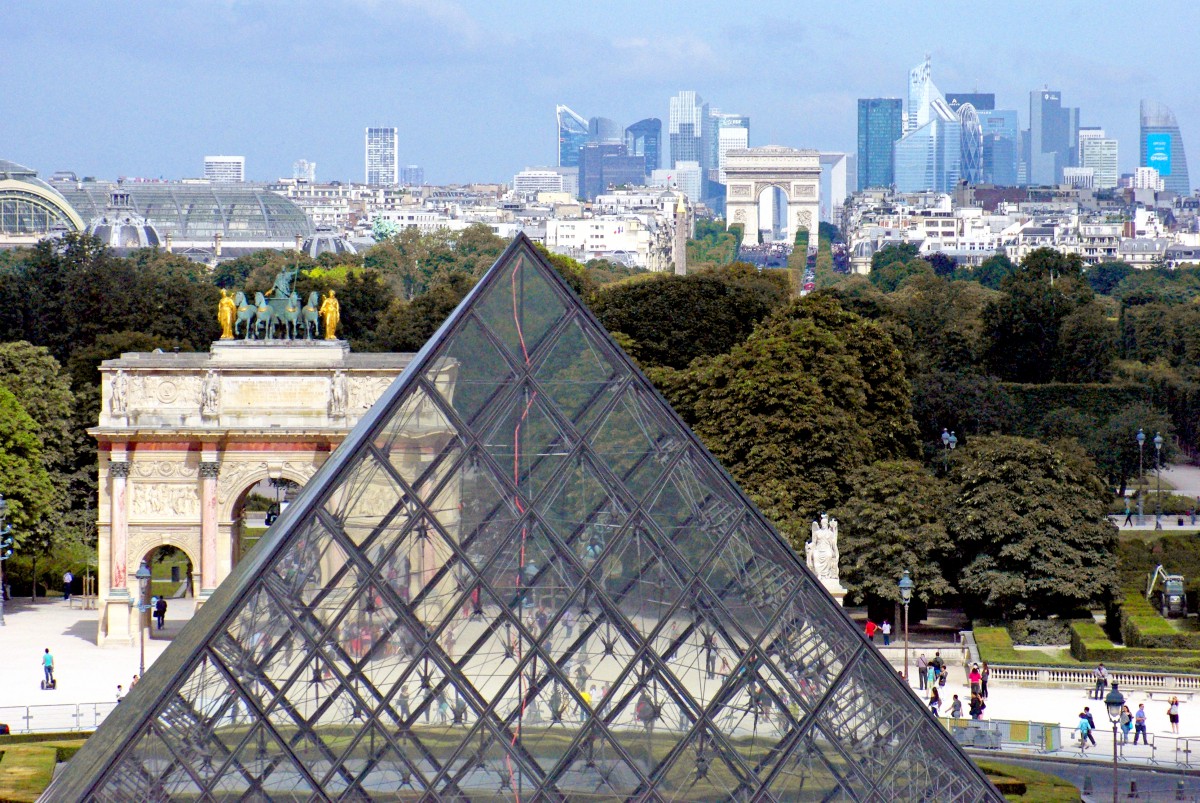 The glass pyramid and the historical axis of Paris © French Moments The glass pyramid and the historical axis of Paris © French Moments
The Historical Axis, also known in French as “Axe Historique”, “Voie Triomphale” or “Voie Royale” is orientated on a 26° angle.
It follows the course of the Sun from its rising in the East to its setting in the West.
Oddly, this angle of orientation is the same as that of Paris’ Notre-Dame Cathedral, some 1,000 metres away from the Louvre Palace.
More than just a series of monuments placed along the axis, it seems that a complex symbolism was at work in the mind of the successive urban planners.
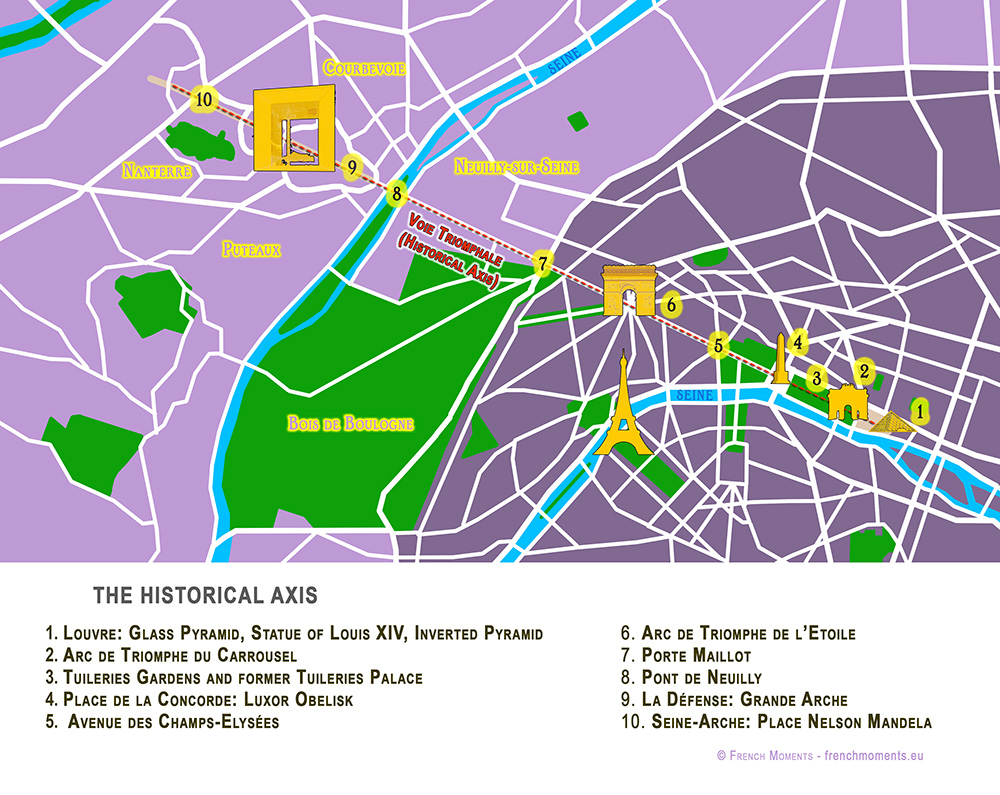
The Historical Axis runs through some of Paris’ most celebrated monuments and squares:
Let’s move along the Historical Axis of Paris, from East to West, starting from the Louvre.
The Palace of the Louvre
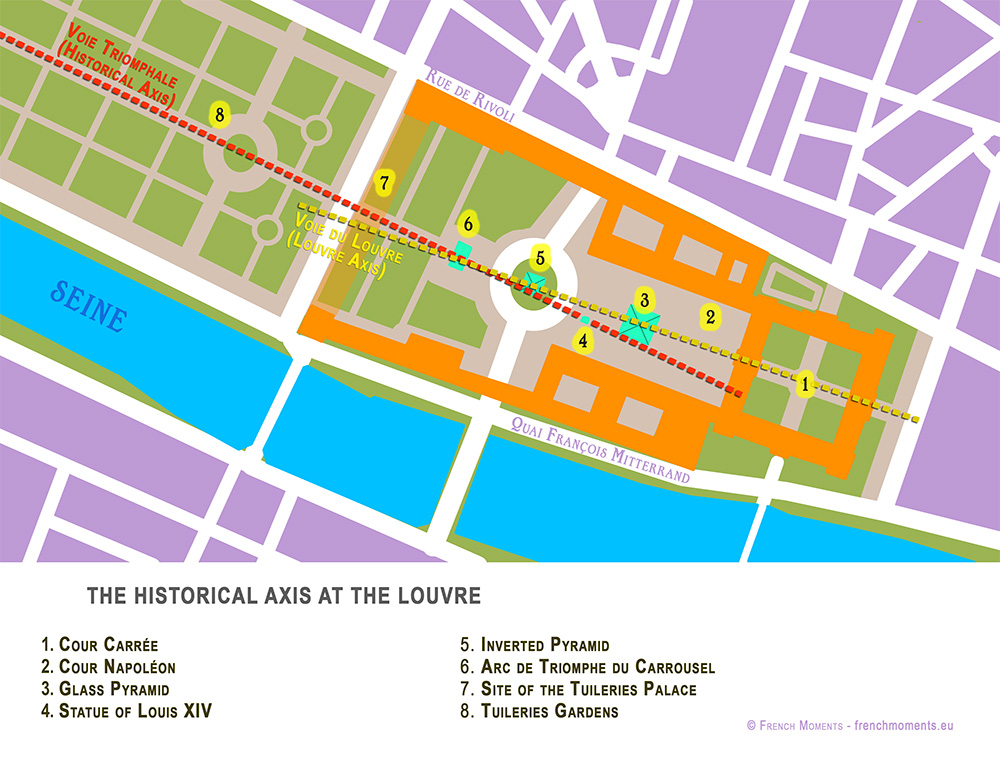
Today the great perspective starts at the Louvre, immediately beyond the Church of St Germain l’Auxerrois.
The crab-shaped Palace was the main residence of the kings of France until 1682, when Louis XIV, the ‘Sun King’, moved his court to Versailles. It currently houses one of the world’s most wonderful museums in a complex that is known as the “Grand Louvre”.
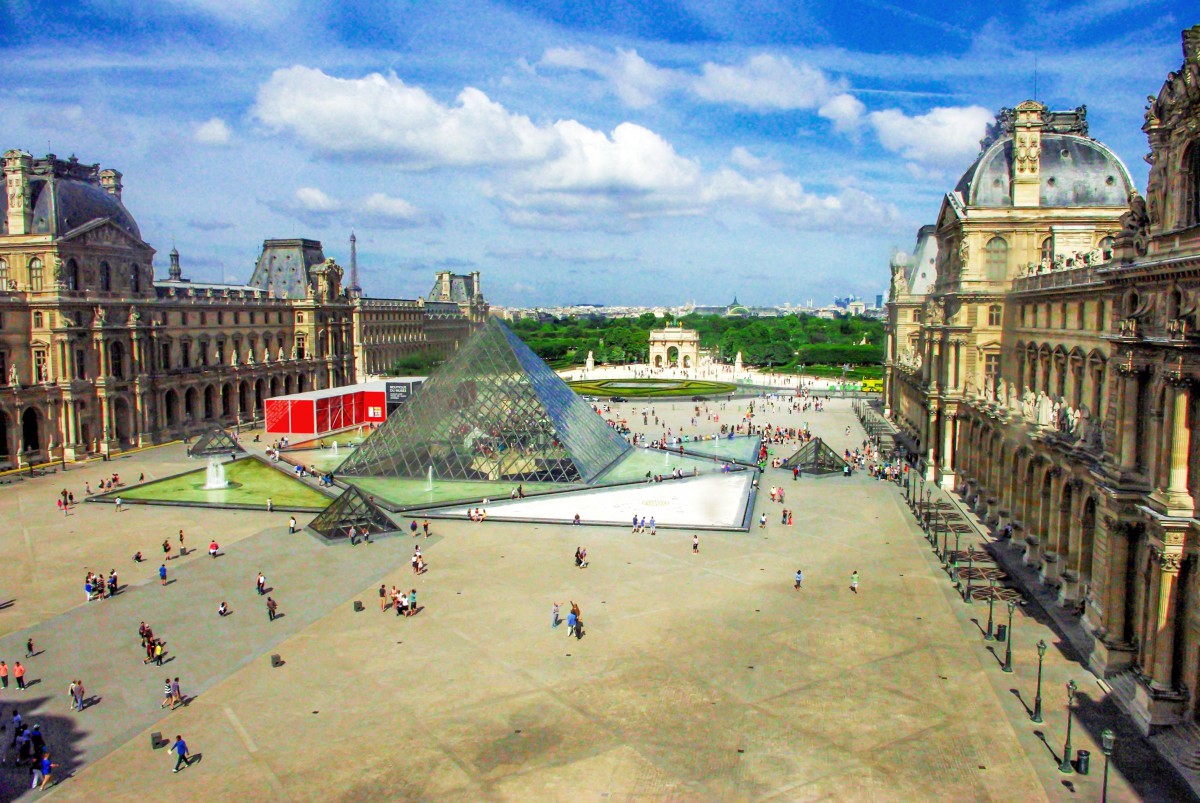 The Louvre today © French Moments The Louvre today © French Moments
The controversial glass pyramid of the Louvre
President François Mitterrand left his mark with his pharaonic project of “Le Grand Louvre”. He wished to complete it for the bicentennial celebration of the French Revolution in 1989. The titanic project comprised of major renovation works and the construction of a new landmark along the Historical Axis: the celebrated (and controversial) Glass Pyramid.
But if you look closer, you’ll notice that the glass pyramid is not aligned with the other monuments on the Historical Axis.
That’s why something had to be added in this vast courtyard of the Louvre…
https://frenchmoments.eu/historical-axis-of-paris-la-voie-triomphale/ |
|
|
|
|
  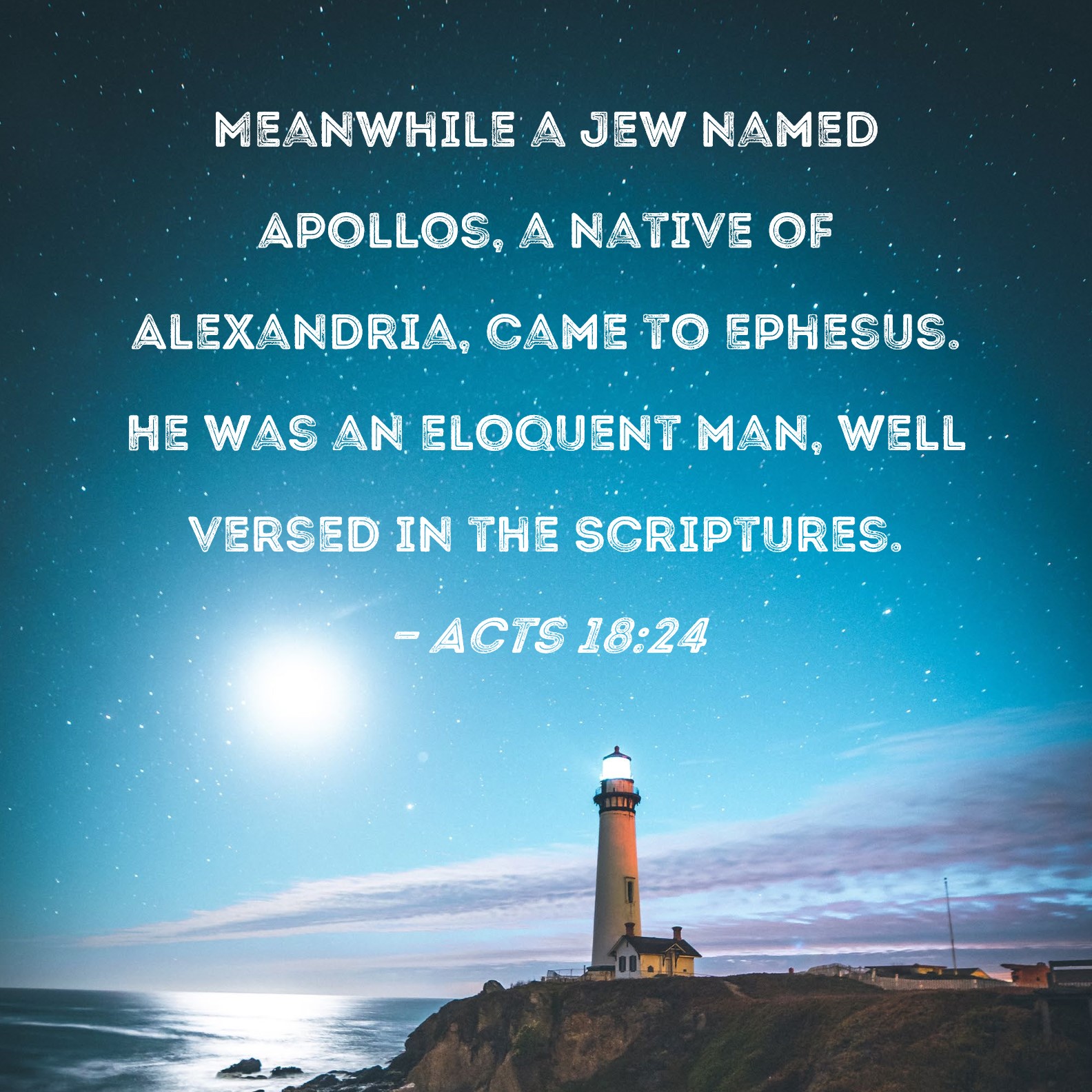 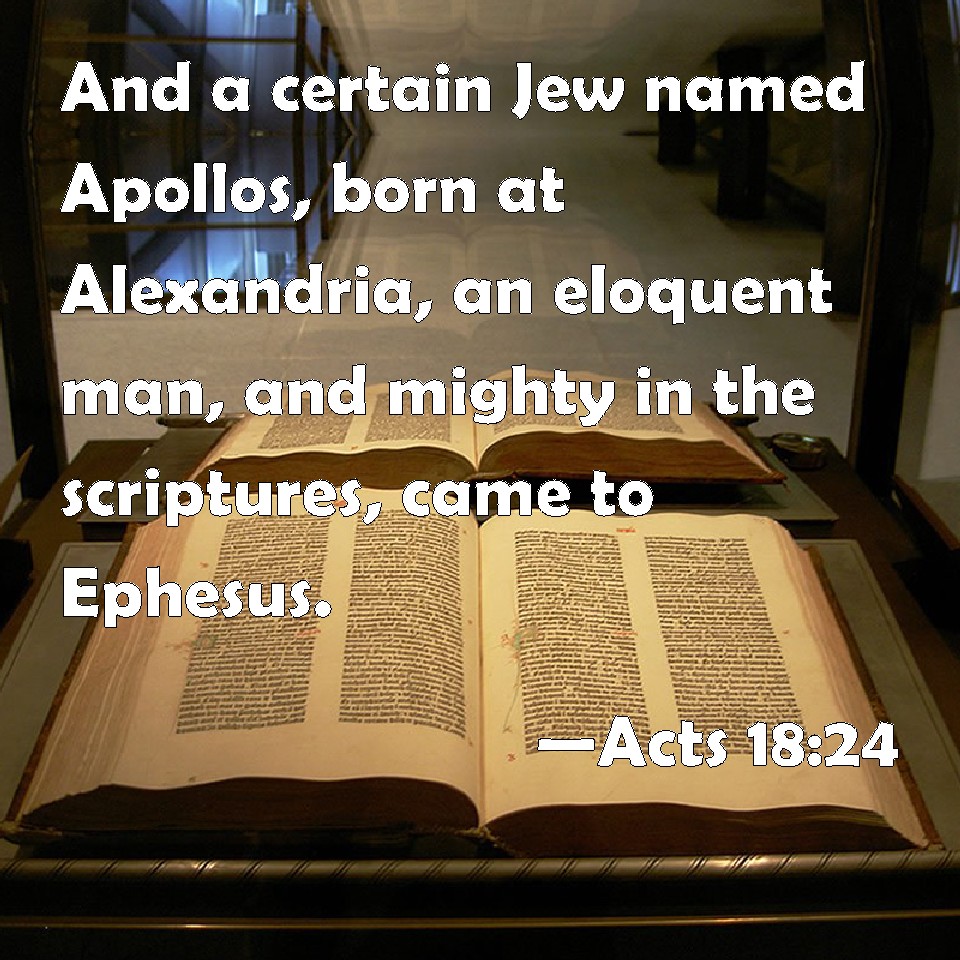
New International VersionMeanwhile a Jew named Apollos, a native of Alexandria, came to Ephesus. He was a learned man, with a thorough knowledge of the Scriptures.
New Living TranslationMeanwhile, a Jew named Apollos, an eloquent speaker who knew the Scriptures well, had arrived in Ephesus from Alexandria in Egypt.
English Standard VersionNow a Jew named Apollos, a native of Alexandria, came to Ephesus. He was an eloquent man, competent in the Scriptures.
Berean Standard BibleMeanwhile a Jew named Apollos, a native of Alexandria, came to Ephesus. He was an eloquent man, well versed in the Scriptures.
Berean Literal BibleNow a certain Jew named Apollos, a native of Alexandria, came to Ephesus, being an eloquent man, mighty in the Scriptures.
King James BibleAnd a certain Jew named Apollos, born at Alexandria, an eloquent man, and mighty in the scriptures, came to Ephesus.
New King James VersionNow a certain Jew named Apollos, born at Alexandria, an eloquent man and mighty in the Scriptures, came to Ephesus.
New American Standard BibleNow a Jew named Apollos, an Alexandrian by birth, an eloquent man, came to Ephesus; and he was proficient in the Scriptures.
NASB 1995Now a Jew named Apollos, an Alexandrian by birth, an eloquent man, came to Ephesus; and he was mighty in the Scriptures.
NASB 1977Now a certain Jew named Apollos, an Alexandrian by birth, an eloquent man, came to Ephesus; and he was mighty in the Scriptures.
Legacy Standard BibleNow a Jew named Apollos, an Alexandrian by birth, an eloquent man, arrived at Ephesus; and he was mighty in the Scriptures.
Amplified BibleNow a Jew named Apollos, a native of Alexandria, came to Ephesus. He was an eloquent and cultured man, and well versed in the [Hebrew] Scriptures.
Christian Standard BibleNow a Jew named Apollos, a native Alexandrian, an eloquent man who was competent in the use of the Scriptures, arrived in Ephesus.
Holman Christian Standard BibleA Jew named Apollos, a native Alexandrian, an eloquent man who was powerful in the use of the Scriptures, arrived in Ephesus.
American Standard VersionNow a certain Jew named Apollos, an Alexandrian by race, an eloquent man, came to Ephesus; and he was mighty in the scriptures.
Contemporary English VersionA Jewish man named Apollos came to Ephesus. Apollos had been born in the city of Alexandria. He was a very good speaker and knew a lot about the Scriptures.
English Revised VersionNow a certain Jew named Apollos, an Alexandrian by race, a learned man, came to Ephesus; and he was mighty in the scriptures.
GOD'S WORD® TranslationA Jew named Apollos, who had been born in Alexandria, arrived in the city of Ephesus. He was an eloquent speaker and knew how to use the Scriptures in a powerful way.
Good News TranslationAt that time a Jew named Apollos, who had been born in Alexandria, came to Ephesus. He was an eloquent speaker and had a thorough knowledge of the Scriptures.
International Standard VersionMeanwhile, a Jew named Apollos arrived in Ephesus. He was a native of Alexandria, an eloquent man, and well versed in the Scriptures.
Majority Standard BibleMeanwhile a Jew named Apollos, a native of Alexandria, came to Ephesus. He was an eloquent man, well versed in the Scriptures.
NET BibleNow a Jew named Apollos, a native of Alexandria, arrived in Ephesus. He was an eloquent speaker, well-versed in the scriptures.
New Heart English BibleNow a certain Jew named Apollos, an Alexandrian by race, an eloquent man, came to Ephesus. He was mighty in the Scriptures.
Webster's Bible TranslationAnd a certain Jew named Apollos, born at Alexandria, an eloquent man, and mighty in the scriptures, came to Ephesus.
Weymouth New TestamentMeanwhile a Jew named Apollos came to Ephesus. He was a native of Alexandria, a man of great learning and well versed in the Scriptures.
World English BibleNow a certain Jew named Apollos, an Alexandrian by race, an eloquent man, came to Ephesus. He was mighty in the Scriptures.
Literal Translations
Literal Standard VersionAnd a certain Jew, Apollos by name, an Alexandrian by birth, a man of eloquence, being mighty in the Writings, came to Ephesus;
Berean Literal BibleNow a certain Jew named Apollos, a native of Alexandria, came to Ephesus, being an eloquent man, mighty in the Scriptures.
Young's Literal TranslationAnd a certain Jew, Apollos by name, an Alexandrian by birth, a man of eloquence, being mighty in the Writings, came to Ephesus,
Smith's Literal TranslationAnd a certain Jew, Apollos by name, an Alexandrian by birth, an eloquent man, arrived at Ephesus, being able in the writings.
Catholic Translations
Douay-Rheims BibleNow a certain Jew, named Apollo, born at Alexandria, an eloquent man, came to Ephesus, one mighty in the scriptures.
Catholic Public Domain VersionNow a certain Jew named Apollo, born at Alexandria, an eloquent man who was powerful with the Scriptures, arrived at Ephesus.
New American BibleA Jew named Apollos, a native of Alexandria, an eloquent speaker, arrived in Ephesus. He was an authority on the scriptures.
New Revised Standard VersionNow there came to Ephesus a Jew named Apollos, a native of Alexandria. He was an eloquent man, well-versed in the scriptures.
Translations from Aramaic
Lamsa BibleAnd a certain Jew named A-pol’los, a native of Al-ex-an’dri-a, an eloquent man and well versed in the scriptures, came to Eph'esus.
Aramaic Bible in Plain EnglishOne man, a Jew whose name was Apollo, a native of Alexandria and instructed in the word, was familiar with the Scriptures and he came to Ephesaus.
NT Translations
Anderson New TestamentAnd a certain Jew, named Apollos, an Alexandrian by birth, an eloquent man, and mighty in the Scriptures, came to Ephesus.
Godbey New TestamentAnd a certain Jew, Apollos by name, an Alexandrian by race, an eloquent man, came into Ephesus, being mighty in the scriptures.
Haweis New TestamentNow a certain Jew named Apollos, an Alexandrian by birth, a man of eloquence, who was powerful in the Scriptures, had come to Ephesus.
Mace New TestamentIn the mean time a Jew, nam'd Apollos, born at Alexandria, a man of letters, and vers'd in the scriptures, arriv'd at Ephesus.
Weymouth New TestamentMeanwhile a Jew named Apollos came to Ephesus. He was a native of Alexandria, a man of great learning and well versed in the Scriptures.
Worrell New TestamentNow a certain Jew, Apollos by name, an Alexandrian by birth, a learned man, came down to Ephesus; and he was mighty in the Scriptures.
Worsley New TestamentNow there came to Ephesus a certain Jew named Apollos, an Alexandrian by birth, an eloquent man, and mighty in the scriptures.
|
|
|
|
|
|
La llama de los Juegos Paralímpicos ilumina París
29/08/202429 de agosto de 2024
El presidente francés Emmanuel Macron proclamó la apertura de los juegos en una ceremonia celebrada en la Plaza de la Concordia.
 El atleta germano Markus Rehm porta la llama paralímpica frente al famoso Obelisco de Luxor en la Plaza de la Concordia, en París, Francia. Imagen: Gonzalo Fuentes/AP Photo/picture alliance El atleta germano Markus Rehm porta la llama paralímpica frente al famoso Obelisco de Luxor en la Plaza de la Concordia, en París, Francia. Imagen: Gonzalo Fuentes/AP Photo/picture alliance
El presidente de Francia, Emmanuel Macron, proclamó oficialmente "abiertos" los Juegos Paralímpicos de París, este miércoles (28.08.2024) por la noche durante una ceremonia celebrada en la Plaza de la Concordia, en el corazón de la capital francesa.
Un mes después del inicio de la cita olímpica en París, la ceremonia de apertura de los Paralímpicos 2024 ofreció un espectáculo enfocado a la inclusión de todos los cuerpos y prometió una "revolución" que transformará el mundo.
Esta vez bajo el brillante sol parisino, la cita paralímpica, la primera de la historia en Francia, comenzó puntualmente a las 18H00 GMT con un espectáculo de unas tres horas ideado por el prestigioso director de teatro francés Thomas Jolly.
"Bienvenidos al país del amor... y de la revolución", declaró el presidente del Comité Organizador de París-2024, Tony Estanguet, una vez caída la noche en la plaza de la Concordia, donde un escenario central en torno al famoso Obelisco de Luxor acogió el espectáculo 'Paradoxe' (Paradoja).
El Obelisco de la plaza de La Concorde y la Torre Eiffel se iluminan durante la Ceremonia de Apertura de los Juegos Paralímpicos de 2024. Imagen: Thomas Padilla/AP Photo/picture alliance
Unos 4.400 deportistas de 168 delegaciones desfilaron desde los Campos Elíseos, considerada entre los franceses como "la avenida más hermosa del mundo", hasta la plaza donde Luis XVI y María Antonieta perdieron sus cabezas durante la Revolución.
A su paso, los casi 50.000 espectadores aplaudieron y corearon los nombres de los países y los paradeportistas entretenían al público.
"La revolución paralímpica"
"Esta noche comienza la revolución paralímpica", aseguró Estanguet, una idea compartida por el presidente del Comité Paralímpico Internacional (CPI), el brasileño Andrew Parsons, que celebró durante su discurso "el evento deportivo más transformador del mundo".
Los abanderados de Alemania Edina Mueller y Martin Schulz durante la ceremonia de apertura de los Juegos Olímpicos de París 2024 en la Place de la Concorde. Imagen: Zac Goodwin/empics/picture alliance
Tras las palabras de Estanguet y Parsons, el presidente Macron declaró oficialmente "abiertos" los Juegos Paralímpicos de París.
La música tuvo un protagonismo especial durante la ceremonia con Chilly Gonzalez tocando el piano, con la artista francesa Christine and the Queens interpretando una nueva versión de la canción de Édith Piaf 'Non, je ne regrette rien' y con el DJ francés Myd amenizando el desfile de los 167 países más el del equipo de refugiados.
Esas 168 delegaciones, récord histórico de participación, suponen mejorar el récord anterior de 164 en los Juegos Paralímpicos de Londres 2012 y de Tokio 2020, con tres países (Eritrea, Kiribati y Kosovo) debutando en una cita.
jc (afp, efe, reuters)
https://www.dw.com/es/la-llama-de-los-juegos-paral%C3%ADmpicos-ilumina-par%C3%ADs/a-70075811 |
|
|
 Primer
Primer
 Anterior
2 a 11 de 11
Siguiente
Anterior
2 a 11 de 11
Siguiente
 Último
Último

|
|
| |
|
|
©2025 - Gabitos - Todos los derechos reservados | |
|
|
















 Flip
Flip







